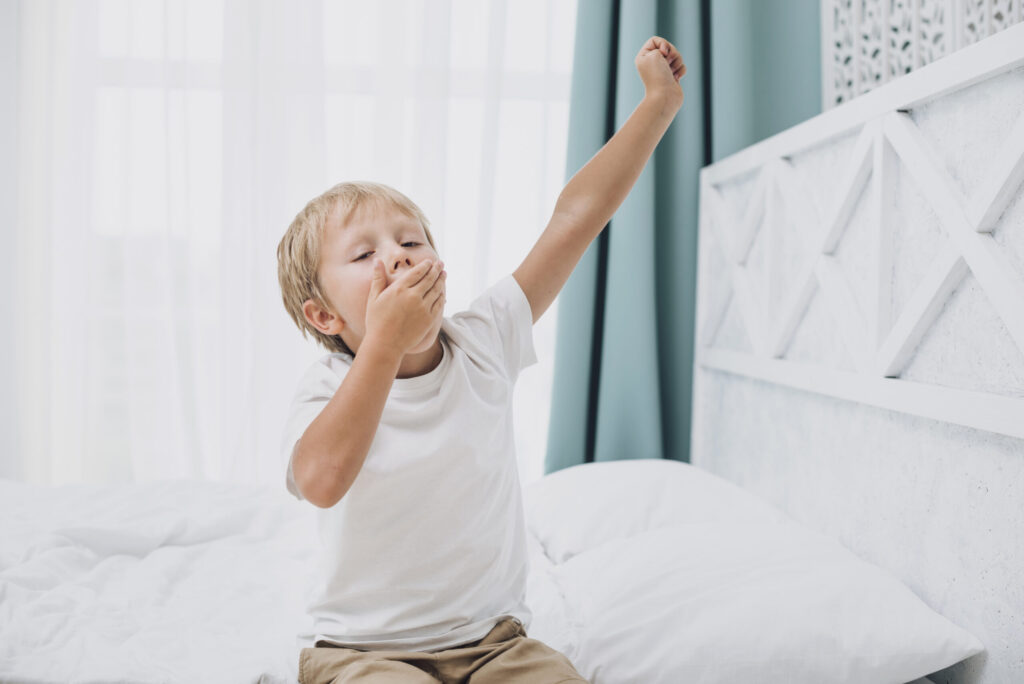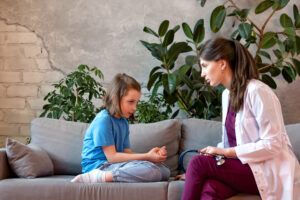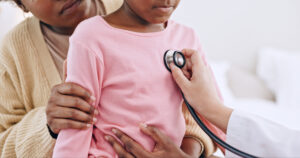Sleep is essential for a child’s growth and development, but when sleep is disrupted, it can have a significant impact on their overall health. One condition that can interfere with restful sleep is sleep apnea, which affects not only adults but also children. If your child struggles with loud snoring, restless sleep, or unusual tiredness during the day, it’s worth considering whether they might be experiencing sleep apnea. In this guide, we’ll explore the symptoms, causes, and types of sleep apnea in children and introduce an AI tool that can help you assess your child’s condition from home.
What is Sleep Apnea in Children?
Sleep apnea is a condition where breathing repeatedly stops and starts during sleep. In children, it can lead to poor-quality sleep, which may result in daytime fatigue, behavioral issues, and even developmental delays.
There are two primary types of sleep apnea in children:
- Obstructive Sleep Apnea (OSA): The most common form in children, OSA occurs when the airway becomes blocked during sleep. This is often due to enlarged tonsils, adenoids, or other structural issues in the throat. OSA leads to frequent interruptions in breathing, causing the child to wake up repeatedly throughout the night without realizing it.
- Central Sleep Apnea (CSA): Unlike OSA, central sleep apnea is caused by a problem in the brain’s signaling process. In CSA, the brain temporarily stops sending signals to the muscles that control breathing, leading to pauses in breathing during sleep. Central sleep apnea is less common in children and is often associated with underlying medical or neurological conditions, including certain genetic disorders like Congenital Central Hypoventilation Syndrome (CCHS).
Both types of sleep apnea can result in poor sleep quality and other health issues, but their causes and treatments may differ.
Signs and Symptoms of Sleep Apnea in Children
Spotting the signs of sleep apnea in children can be challenging, as many symptoms occur while the child is asleep. However, there are both nighttime and daytime symptoms that may indicate your child has sleep apnea:
Nighttime Symptoms:
- Loud, chronic snoring
- Pauses in breathing followed by gasping or choking
- Restless sleep with frequent awakenings
- Mouth breathing or dry mouth upon waking
- Bedwetting
Daytime Symptoms:
- Excessive tiredness or fatigue, even after a full night’s sleep
- Difficulty concentrating or poor performance in school
- Hyperactivity or behavioral problems
- Mood swings or irritability
- Frequent morning headaches
If your child regularly experiences any of these symptoms, it’s important to take note of them and consider seeking an evaluation.
What Causes Sleep Apnea in Children?
Several factors can contribute to the causes of sleep apnea in children and understanding them can help you pinpoint potential risks. Some common causes of obstructive sleep apnea in children include:
- Enlarged Tonsils and Adenoids: These are the most common culprits behind obstructive sleep apnea in children, as they can block the airway during sleep.
- Obesity: Excess weight can place additional pressure on a child’s airway, increasing the risk of OSA.
- Facial or Structural Abnormalities: Children with certain genetic or craniofacial syndromes may be more prone to sleep apnea due to the shape of their airway or facial structures.
- Allergies or Chronic Sinus Issues: These can lead to inflammation and blockage of the nasal passages, making it harder to breathe during sleep.
- Family History: Children with a family history of sleep apnea are more likely to develop the condition.
In the case of central sleep apnea, the causes often involve the brain’s failure to regulate breathing properly. Neurological conditions, genetic disorders, or medical conditions that affect the brain’s respiratory control can all contribute to CSA in children.
Why Early Detection is Important
If left untreated, sleep apnea in children can lead to more serious health concerns, including delayed growth, heart problems, and difficulties in learning and behavior. Recognizing the signs of sleep apnea in children early can make a significant difference in their quality of life. Sleep apnea is treatable, but it requires a proper diagnosis and, in some cases, interventions like surgery, CPAP therapy, or lifestyle changes.
What to Do if You Suspect Sleep Apnea in Your Child
If you’re concerned that your child may have sleep apnea, the best thing you can do is take action. You can start by using the Child Development Checker app to assess your child’s symptoms. If the report suggests that your child might have health issues, follow up with a healthcare professional who can recommend further testing or treatment options.
Early detection is key to preventing long-term health issues related to sleep apnea, and with the right tools and support, your child can get the help they need to sleep better and feel better.
Sleep apnea in children is more common than many parents realize, but recognizing the signs and acting early can have a huge impact on your child’s health and development. The Child Development Checker app can guide you through this process, offering an easy, accessible way to assess your child’s condition from home. By staying informed and proactive, you’re taking an important step in ensuring your child gets the restful sleep they need to grow, learn, and thrive. AI tools can help expedite the diagnosis process, but it is essential to always consult with a healthcare professional for a formal diagnosis and proper guidance.
Evaluation
Don’t let your questions stay questions
Ease your concerns, gain a better understanding of your child’s development process, and connect with medical professionals in your area.



